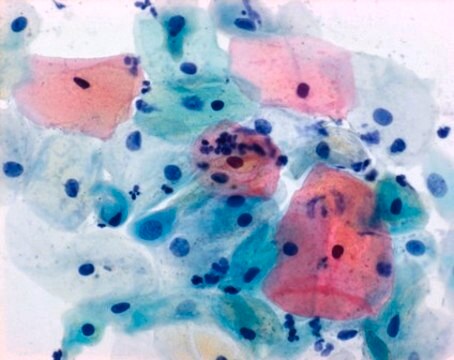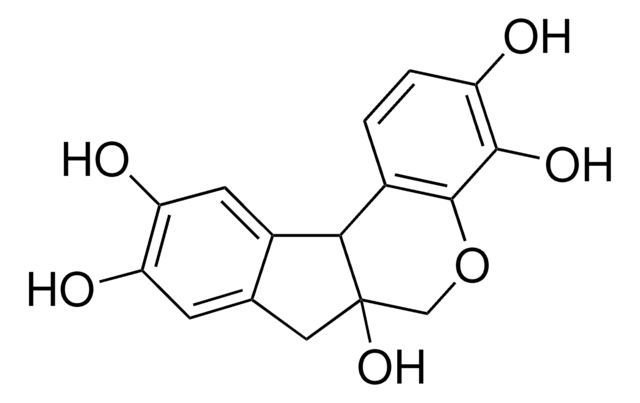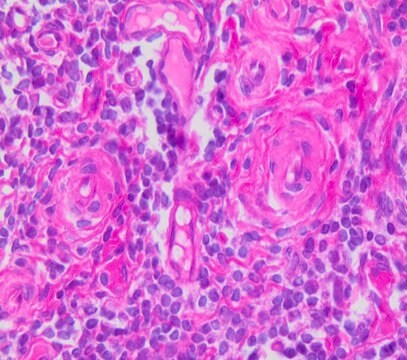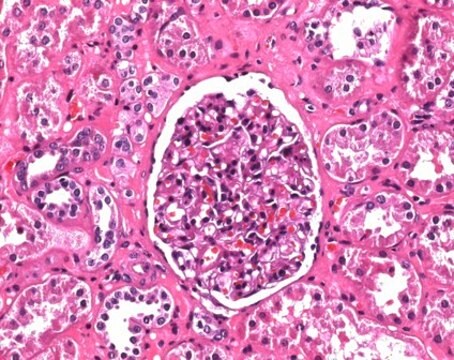1.09253
Papanicolaou′s solution 1a Harris′ hematoxylin solution
for cytology
Synonym(s):
Hematoxylin solution acc. to Harris, Colour solution acc. to Papanicolaou, Harris′ Hematoxylin solution
About This Item
Recommended Products
Quality Level
form
liquid
IVD
for in vitro diagnostic use
pH
2.5-3.0 (20 °C in H2O)
bp
100 °C/1013 hPa
density
1.04 g/cm3 at 20 °C
application(s)
clinical testing
diagnostic assay manufacturing
hematology
histology
storage temp.
15-25°C
General description
A 500 ml bottle of either solution is sufficient for 1500 -2500 stainings. It is registered as IVD and CE certified product and can be used for clinical diagnostics. For more details, please see instructions for use (IFU). The IFU can be downloaded from this webpage.
Analysis Note
Nuclei: blue to dark violet
Cyanophilic cytoplasm: blue-green
Eosinophilic cytoplasm: pink
Signal Word
Danger
Hazard Statements
Precautionary Statements
Hazard Classifications
Eye Dam. 1
Storage Class Code
12 - Non Combustible Liquids
WGK
WGK 1
Flash Point(F)
Not applicable
Flash Point(C)
Not applicable
Certificates of Analysis (COA)
Search for Certificates of Analysis (COA) by entering the products Lot/Batch Number. Lot and Batch Numbers can be found on a product’s label following the words ‘Lot’ or ‘Batch’.
Already Own This Product?
Find documentation for the products that you have recently purchased in the Document Library.
Customers Also Viewed
Our team of scientists has experience in all areas of research including Life Science, Material Science, Chemical Synthesis, Chromatography, Analytical and many others.
Contact Technical Service






